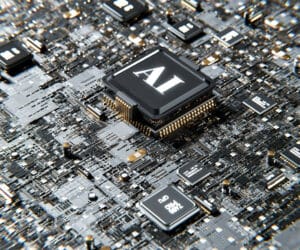With the exponential growth of IoT (Internet of Things) devices, artificial intelligence (AI) is becoming a core technology for enhancing the efficiency and reliability of device management. By integrating AI, device management is shifting from traditional manual operations to automated and intelligent processes. Notably, Predictive Maintenance enables timely warnings before device failures, reducing downtime risks and maintenance costs.
In this article, we explore how to use AI to optimize IoT device automation management processes, including automated configuration, fault prediction, intelligent optimization, and the application of AI in edge devices.
Why Choose AI for IoT Device Management?
Traditional device management relies on regular maintenance or post-failure repairs. While simple, this approach is inefficient, particularly for large-scale device management, leading to the following challenges:
- High Operational Costs: Frequent manual interventions increase maintenance expenses.
- Unpredictable Downtime Risks: Undetected failures may cause system crashes.
- Underutilized Data: Massive data generated by devices remains under-analyzed and underutilized.
Advantages of AI in Device Management:
- Real-time Monitoring and Analysis: Data-driven monitoring quickly identifies anomalies.
- Predictive Maintenance: Identifies potential issues early to prevent device failures.
- Automated Management: Optimizes device configurations and operations using self-learning algorithms.
Key Applications of AI in IoT Device Management
1. Automated Device Configuration and Optimization
Challenges:
- Initial configuration of numerous devices typically relies on manual work, which is time-consuming and error-prone.
- Device operating states need dynamic adjustments to adapt to environmental or task changes.
Solutions:
- AI-powered Automated Configuration:
- Analyze the operating environment using AI models to automatically generate optimal configuration parameters.
- Use reinforcement learning algorithms to optimize device behavior, such as energy consumption or performance output.
- Example: Smart Lighting Control System:
- AI dynamically adjusts light brightness and color temperature based on indoor lighting and user habits for optimal user experience.
2. Predictive Maintenance: Preventive Fault Management
Challenges:
- How to identify potential issues before they cause failures?
- How to reduce unnecessary regular maintenance costs?
Solutions:
- Machine Learning-based Fault Prediction:
- Train machine learning models with historical data to recognize anomalous patterns in device operations.
- Predict potential failure times and causes.
- Real-time Data Stream Analysis:
- Collect and analyze operational data like temperature, vibration, and pressure through edge devices in real-time.
- Detect anomalies using deep learning algorithms.
- Example: Predictive Maintenance for Wind Turbines:
- Sensors on wind turbines monitor vibrations and temperature changes.
- AI models predict bearing wear and schedule maintenance before failures occur.
3. Applications of Edge AI
Challenges:
- Limited computational capacity of edge devices to efficiently run AI models.
- Data transmission to the cloud for analysis may cause latency and privacy issues.
Solutions:
- Lightweight AI Models:
- Use optimized machine learning models (e.g., TinyML) to run on edge devices.
- Minimize resource requirements while achieving local analysis.
- Hierarchical Data Processing:
- Perform simple prediction tasks (e.g., temperature anomaly detection) on edge devices.
- Upload complex analysis tasks to the cloud to reduce edge device pressure.
- Example: Edge AI in Industrial Equipment:
- Edge AI chips in factory equipment detect vibration anomalies in real-time.
- Local alert systems quickly notify operators for inspections.
4. Data-driven Device Optimization
AI's core lies in deep analysis and utilization of operational data, which includes:
- Data Aggregation: Consolidating device-generated data into analyzable formats.
- Optimization Models: Using AI to optimize operational parameters, such as energy efficiency and network performance.
Example: Device Optimization in Smart Agriculture
- AI analyzes soil moisture sensor data to predict the best irrigation times.
- Adjusts irrigation devices dynamically based on weather forecasts, conserving water resources and boosting crop yields.
Technologies and Tools for Implementation
To apply AI in IoT device management, the following key technologies and tools are required:
| Technology/Tool | Application Scenarios | Features |
|---|---|---|
| Machine Learning Models | Fault prediction, optimization control | Supports data-driven analysis |
| Edge Computing Frameworks | Edge device intelligence | Reduces latency, enhances privacy |
| Data Stream Processing Tools | Real-time monitoring and analysis | Tools like Apache Kafka and Flink |
| Cloud AI Services | Large-scale device data analysis | AWS SageMaker, Google AI Platform |
Recommended IoT Platforms with AI Capabilities
An excellent IoT platform should offer built-in AI analysis tools to enable automation and intelligence in IoT device management. Recommended platforms include:
| Platform | AI Capability Support | Application Scenarios |
|---|---|---|
| AWS IoT Greengrass | Edge AI and model deployment | Industrial intelligence, remote monitoring |
| Azure IoT Edge | AI model inference and edge analysis | Smart cities, energy management |
| Google Cloud IoT | High-performance machine learning | Precise data analysis, smart device optimization |
| ThingsBoard | Basic analytics with plugin extensions | Small-to-medium projects |
Case Studies: Practical Predictive Maintenance
Case 1: Predictive Maintenance in Manufacturing
- Background: Hundreds of machines deployed in an automobile factory.
- Solution:
- Sensors collect data on vibrations, temperature, and current.
- Machine learning models predict equipment wear and schedule maintenance teams.
- Results:
- 30% reduction in failure rates.
- 50% reduction in downtime.
Case 2: Equipment Management in Smart Buildings
- Background: A large intelligent office building equipped with HVAC systems and elevators.
- Solution:
- AI models analyze elevator usage data to optimize operations.
- HVAC systems adjust automatically to reduce energy waste.
- Results:
- 25% reduction in energy consumption.
- Significant decrease in equipment failure rates.
Conclusion
The introduction of AI is revolutionizing IoT device automation management. From automated configuration to predictive maintenance and edge intelligence, AI makes device management more efficient, intelligent, and reliable.
Recommendations
- Plan AI Application Scenarios: Identify the most valuable use cases, such as predictive maintenance or optimization control.
- Choose Suitable Platforms and Tools: Select AI-enabled IoT platforms based on practical needs.
- Leverage Data-Driven Optimization: Fully exploit the potential of device data to improve management effectiveness.
By leveraging AI, IoT device management is entering a new era. If you face challenges in device management, consider integrating AI into your IoT systems. It can bring unprecedented value.
Let’s Automate Your Device Ecosystem
ZedIoT’s automation solutions are designed to simplify device operations, reduce maintenance costs, and enable intelligent decision-making across industries. Combining AI and IoT technologies, we enable intelligent automation—from device-level decisions to system-wide alerts—empowering industries to scale with confidence. Whether you're looking to automate a single process or deploy predictive AI at scale, we have the tools to support you.
???? Contact us for Device Automation and AI Solutions



